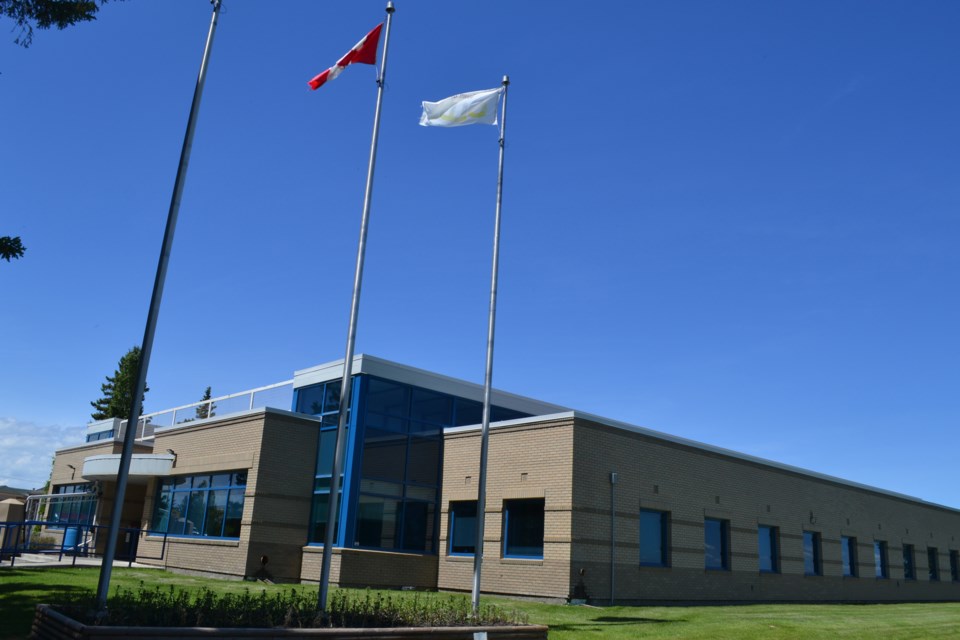OLDS — Should there be public art in community facilities and if so, how much of the town’s budget should be spent on it?
Town councillors wrestled with those questions as they received the Mountain View Regional Parks, Recreation and Culture Master Plan, presented Nov. 22 by Justin Rousseau, managing director of Expedition Management Consulting Ltd.
The towns of Olds, Didsbury, Carstairs, and Sundre, the Village of Cremona and Mountain View County commissioned Expedition Management Consulting Ltd. to update the regional master plan first developed in 2009.
Among other ideas, the updated plan suggests building a regional multi-purpose leisure centre.
That in turn provides the opportunity to install public art in that facility or other community facilities, Rousseau indicated.
The plan recommends that “each municipal partner considers developing a policy that contributes a certain percentage of annual capital funding to support the development and showcasing of art.”
“Public art is considered to be a key component to the attractiveness and identity of a municipality,” a report on the plan says.
“Investment in the arts strengthens the local economy while support for local arts and culture is a reflection of a progressive municipality with a strong sense of character.”
It said “comparable organizations” contribute one per cent of capital project budgets to art.
However, Coun. Heather Ryan expressed some concern about that idea.
Ryan noted she used to live in Calgary, and said that city “got into trouble — a ton of trouble” providing public funds for art. Some of the art projects funded turned out to be pretty controversial.
“I believe in the need for public art. But to put it into a policy, I’m not sure why we would want to go that route,” Ryan said.
“I just think that you’re going down a slippery slope here with regards to that, and I’d like to hear from you as to what your thoughts were in putting that in and what other councillors think about that as well.”
Rousseau said while the figure of one per cent is mentioned, the plan adopts more of a “general recommendation” so that communities would have some flexibility in determining how much they want to allocate toward public art in keeping with community values and priorities.
“What we’re trying to get at here is we’ve also seen facilities, new facilities built, that didn’t allocate any money for any sort of art within the facility and you’re left with these blank walls,” Rousseau said, adding that look doesn’t necessarily reflect the community.
"Without some sort of thought of how you would animate those facilities through public art, often it’s the thing that’s cut first and then at the end of the day, you don’t have public art and you’re scrambling through your operational budget to meet that need,” he said.
“So, that’s why it’s in there. It’s intended to be fairly flexible so you can just pick and choose what you sort of want to do there and establish a policy that’s made in your community.”
Coun. Darren Wilson agreed that “there is a role for public art to play in developing a community and municipality.”
He asked if there’s a "winning formula, a magic formula” to determine how many town dollars should be set aside to fund public art.
Community services director Doug Wagstaff said the town’s Public Art Advisory Committee was created to help determine precisely that.
“(It’s) an opportunity for the Olds council to defer this type of detailed question as to what type of art," he said.
“Council can guide the fiscal parameters and then they can defer to the advisory committee on the particulars that would fit our community and the goals of council at the same time.”
Wagstaff said the amount of one per cent was not “picked out of the air” and is a common figure for municipalities to use when considering how much money to allocate toward funding public art.
Rousseau also said the master plan is just that — a plan — and is subject to review by town council, so the amount set aside can be changed according to budgetary pressures.
Wagstaff echoed that thought, and noted another option is to adopt a regional budget for public art.



